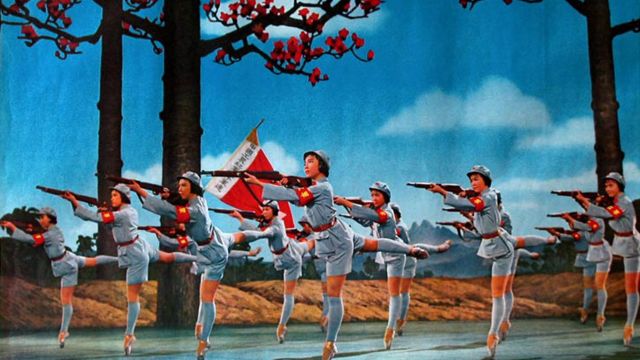The Red Detachment of Women
I don’t know why Melbourne’s newest cultural festival is Asia Topa and not the more memorable Asia Topia, but the organisers have presented the elite National Ballet of China as the highlight of the inaugural festival, and it’s a marvellous chance to experience even more cultural diversity in Melbourne.
The ballet, The Red Detachment of Women, is based on the story of a young peasant girl heroine who rallied women to fight for their freedom by fighting alongside male soldiers in a war against oppression. It’s somewhat like an oriental version of the Joan of Arc story. If it seems a little bit jingoistic and comical in its storytelling, it is certainly no more absurd than a prince falling in love with a swan.
We tend to get stuck in a rut of the classic ballets from the Russian school, so it’s a refreshing change to see something with a strongly defined contemporary storyline that successfully melds reality and storybook elements.
The dancing style of the company is both familiar and alien to us. Along with classical and contemporary ballet, there are acrobatics, and something akin to a nightclub chorus line with all the girls in short shorts, brandishing toy rifles and marching en pointe. There’s even a finale reminiscent of ‘One More Day’ from Les Mis - with dancers marching on the spot in glorious celebration. It’s a wonderfully eclectic mish-mash of styles which is highly entertaining, though ballet purists might be ambivalent.

Style aside, there is no questioning the expertise of the principal dancers - Zhang Jian, Lu Na and Zhou Zhaohui. All three are superb with quite astonishing flexibility. The ballerina dancing the role of Qionghua, in particular, was breathtaking. As for the corps, their point work is exquisite and the precision is something our own Australian Ballet could learn from. Every arm moves as one, every leg is lifted to the same height; but the choreography incorporates much gesturing and posturing in a style quite different to the normal fluidity of Classical ballet, giving an almost mechanical feel that is hard to make graceful. Nevertheless, the sets are stunning, and the lighting is superb and evocative. The rich colours are a feast for the eyes, and the lush score – though occasionally anachronistic - is beautifully played by Orchestra Victoria.
It’s part of the tradition to have a narration of each scene before it starts, telling the audience what they are about to see.
The smooth, lush tones of the Chinese narrator were a delight, even if we couldn’t understand the language. Contrast that with the toneless and expressionless Australian interpretation, devoid of life and passion. It was the most jarring element of the night. Surely, with the amount of stunning voice-over actors we have, someone could have been found to do justice and add passion to the story? It almost marred an enjoyable night.
Coral Drouyn
Subscribe to our E-Newsletter, buy our latest print edition or find a Performing Arts book at Book Nook.

